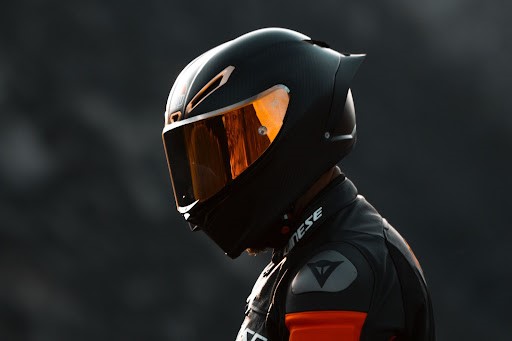 Motocross, a sport of thrill and physical demands, takes its riders into the heart of rugged landscapes. The wilderness, with its unexpected hurdles, necessitates special gear. Among these, motocross helmets stand out. Unlike their regular motorcycle counterparts, they’re designed specifically for off-road adventures. Discover how to select an ideal helmet for your motocross journey, enhancing safety while maintaining excitement.
Motocross, a sport of thrill and physical demands, takes its riders into the heart of rugged landscapes. The wilderness, with its unexpected hurdles, necessitates special gear. Among these, motocross helmets stand out. Unlike their regular motorcycle counterparts, they’re designed specifically for off-road adventures. Discover how to select an ideal helmet for your motocross journey, enhancing safety while maintaining excitement.
The Different Types of Motorcycle Helmets
Here are some of the types motorcyclists use when taking their two-wheelers for a spin on the highway:
1. Full Face Helmets
Full-face helmets provide complete head coverage. They safeguard the skull, face, and jaw. Known for their safety, these helmets feature a one-piece structure. A transparent visor shields the eyes and faces from external elements. Full face helmets rank among the best dirt bike helmets for challenging terrains.
2. Modular Helmets
Modular helmets, or flip-up helmets, offer adaptability. With a hinged design, riders can raise the chin bar and face shield. This convenience appeals to tourers and cruisers. While similar in safety to full-face helmets, they allow for easier communication and refreshment breaks. Despite this, they may not match the protection level of the best dirt bike helmets during a collision.
3. Open Face Helmets
Open-face helmets cover three-quarters of the head. They leave the face exposed, offering increased ventilation and wider views. These lighter helmets deliver a sense of freedom many riders appreciate. The open-face helmets lack the face and chin protection the best dirt bike helmets offer. Pairing them with suitable eye protection is crucial to guard against debris and insects.
Essential Features to Look for in a Motocross Helmet
Motocross riders need to find a comfortable, convenient helmet that offers optimal safety on the racetrack or rocky trails. Here are some essential features to consider when looking for the best dirt bike helmet:
Fit and Comfort
The right fit is crucial for any helmet. It should be snug but not overly tight. A poorly fitting helmet can cause discomfort and provide inadequate protection in a crash. Consider factors like head shape and size when choosing a helmet.
Ventilation
Motocross riding is physically demanding. Good ventilation in a helmet helps keep you cool and comfortable. Look for helmets with multiple vents for airflow. This feature will help reduce fatigue and improve your overall riding experience.
Field of Vision
A wide field of vision is an essential feature in a motocross helmet. It allows you to see obstacles and other riders. Helmets designed specifically for motocross usually have a larger eye port to accommodate goggles and provide an unobstructed view.
Safety Certification
A motocross helmet’s primary function is to protect your head during a crash. Therefore, the first thing to consider is its safety certification. A helmet with DOT, ECE, or Snell certification meets safety standards ensuring optimum protection.
Durability and Construction
Check the construction and materials used in the helmet. High-quality helmets are often made of durable materials like polycarbonate, carbon fiber, or composite shells. These materials offer excellent impact resistance and longevity.
A motocross helmet is a vital piece of gear that can potentially save your life. It is essential to invest in the right one for maximum safety and comfort while riding. Don’t compromise on quality regarding protection, as a well-made helmet is worth every penny.










